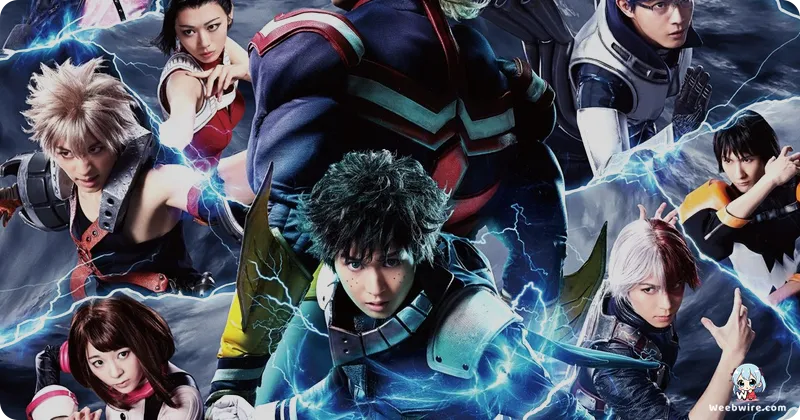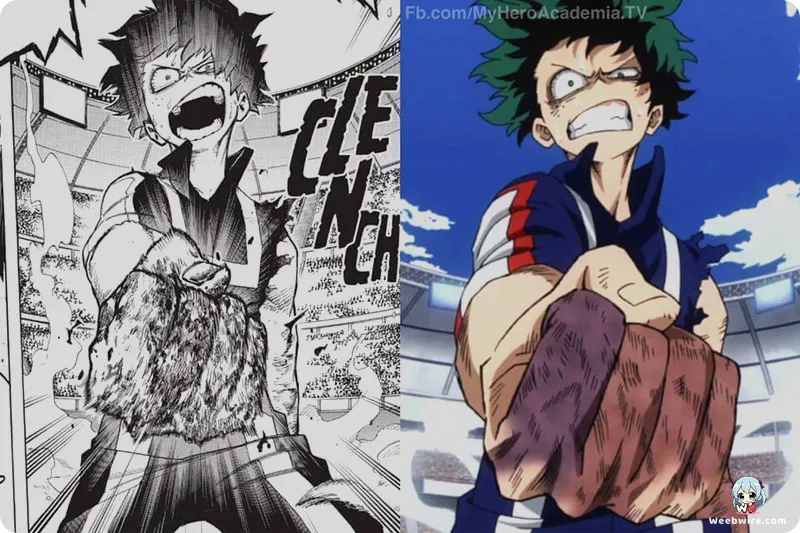Unmasking My Hero Academia: The Untold Creative Secrets Behind a Global Phenomenon

Beyond its exhilarating action sequences and deeply resonant character arcs, My Hero Academia, a global phenomenon that has captivated millions with its vibrant world of Quirks and aspiring heroes, harbors a treasure trove of lesser-known insights. Delving into the intricate tapestry of creative decisions, subtle details, and fascinating tidbits behind this beloved series unveils the meticulous craftsmanship of Kohei Horikoshi and the dynamic adaptation by Studio Bones, enriching our appreciation for this shonen titan.
The Evolution of Katsuki Bakugo
One of the most astonishing revelations for many dedicated fans concerns the initial conceptualization of Katsuki Bakugo, Izuku Midoriya's fiery rival. In stark contrast to the explosive, short-tempered individual audiences have come to know, Horikoshi originally envisioned Bakugo as a far kinder, more amiable character. Early drafts depicted a natural genius who, while competitive, possessed a gentle disposition and even a touch of naiveté. This dramatic evolution in character development proved pivotal, transforming Bakugo into a complex, growth-oriented rival whose abrasive yet ultimately compelling dynamic with Midoriya became a crucial engine for the narrative's early progression. This creative pivot unequivocally cemented Bakugo's status as one of the series' most iconic and multifaceted personalities.
Western Superhero Influences
Another compelling facet of My Hero Academia lies in Horikoshi's profound reverence for Western superhero comics, a dominant influence on the series' aesthetic and thematic bedrock. From its vibrant costuming and diverse power sets to the clear delineations between heroes and villains, the series is steeped in homages to American superhero lore. Horikoshi has openly acknowledged Marvel and DC comics as primary inspirations, specifically citing the X-Men for its diverse ensemble of super-powered individuals and the concept of a specialized school. This influence transcends mere superficiality, permeating the narrative structure, the moral quandaries faced by characters, and the very foundation of a society built upon superhuman abilities, forging a unique genre fusion that resonates powerfully with a broad international audience.
The Art of Character Naming
The meticulous thought invested in character naming represents yet another fascinating, often-overlooked detail. Horikoshi frequently employs kanji with double meanings or phonetic similarities to subtly embed clues about characters' Quirks or inherent personalities. For instance, Izuku Midoriya's name incorporates characters that can signify 'green' and 'valley,' subtly hinting at his initial unassuming nature and eventual monumental growth. Katsuki Bakugo's name includes characters evoking 'explosion' and 'victory,' perfectly encapsulating his destructive Quirk and relentless competitive drive. Similarly, Shoto Todoroki's name brilliantly combines kanji for 'burning' and 'freezing,' directly referencing his Half-Cold Half-Hot Quirk. This intricate linguistic artistry adds a profound layer of intellectual delight for fans who delve into the nuanced wordplay, underscoring Horikoshi's unwavering dedication to crafting a cohesive and thoughtfully designed world.
Studio Bones' Animation Mastery
Studio Bones, the animation powerhouse behind My Hero Academia, has consistently delivered breathtaking animation, bringing Horikoshi's vision to life with unparalleled dynamism. Their signature style, characterized by fluid action sequences, profoundly expressive character movements, and vibrant visual effects, is a cornerstone of the anime's widespread success. Bones' animators strategically employ techniques like 'limited animation' to maximize visual impact during key frames and impactful moments, particularly during climactic battles. However, when the narrative demands it, they unleash a torrent of high-frame-rate, meticulously detailed animation that renders every punch, explosion, and Quirk activation incredibly impactful. This mastery of visual storytelling ensures that the emotional weight and raw power of each scene are fully conveyed, elevating the source material and captivating viewers worldwide. Their unwavering commitment to quality has rendered them synonymous with the series' iconic visual identity.

Hidden Gems and Easter Eggs
Furthermore, the series is replete with subtle Easter eggs and hidden details that richly reward attentive viewers. From background characters resembling figures from Horikoshi's earlier works to clever visual gags and nuanced pop culture references, these elements add layers of rewatchability and pure enjoyment for dedicated fans. These small touches unequivocally demonstrate the creators' passion and their desire to weave a rich tapestry of references and inside jokes into the very fabric of the My Hero Academia universe, fostering a profound sense of discovery and connection with the audience. These hidden gems undeniably contribute to the series' overall charm and its remarkable ability to maintain fan engagement long after initial viewing.
In essence, My Hero Academia's enduring global appeal is not solely predicated on its compelling narrative and unforgettable characters, but equally on the wealth of fascinating creative decisions and meticulous details underpinning its very foundation. From the surprising origins of its most beloved characters to the ingenious linguistic nuances and the masterful animation that brings it all to life, the series offers a rich, multi-layered experience. These illuminating facts underscore the profound dedication of Kohei Horikoshi and Studio Bones in crafting a universe that continues to inspire, entertain, and surprise fans across the globe, cementing its indelible legacy as a modern classic in the anime landscape.
Credits
My Hero Academia
Author
Kohei Horikoshi
Cover Art
Kohei Horikoshi
Studio
Bones
Publisher
Shueisha
Producers





